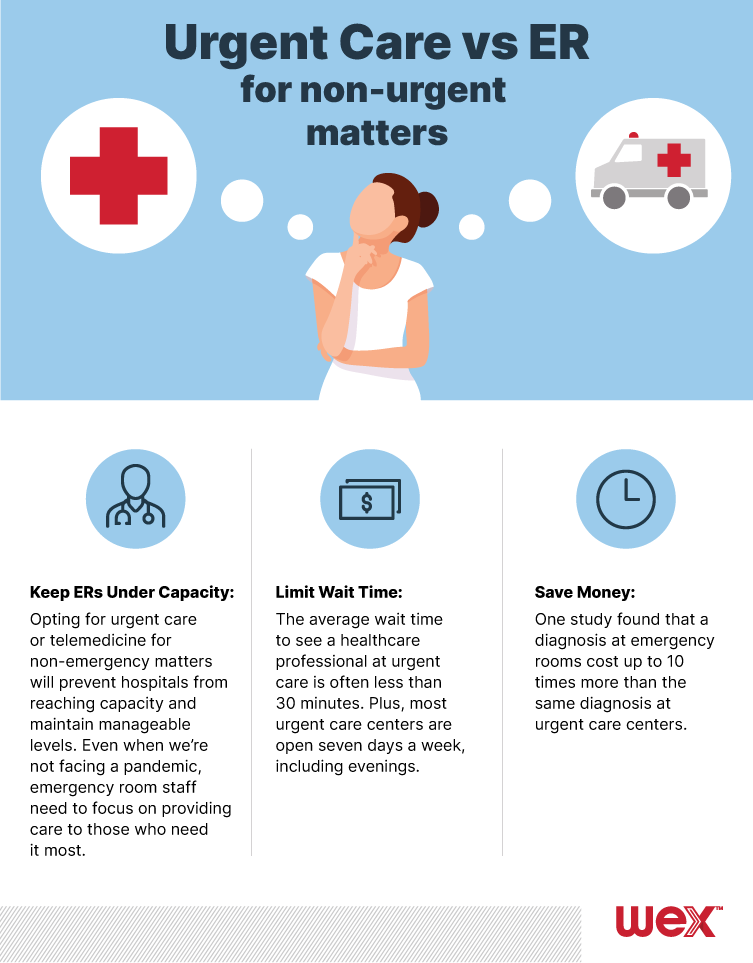Stay connected
Subscribe to our Inside WEX blog and follow us on social media for the insider view on everything WEX, from payments innovation to what it means to be a WEXer.

Should I go to urgent care or the Emergency Room?
Is urgent care cheaper than the ER?
What does urgent care treat?
What is telemedicine and when is it the best option?
These are just a handful of common questions associated with health concerns and where to go for treatment. While the severity of one’s condition is the most important factor in choosing healthcare, other variables such as cost, convenience and whether a facility accepts insurance also play a role.
That said, educating your workforce on the differences between urgent care, the emergency room and telemedicine is extremely important. Especially now, when doctor’s offices and emergency rooms across the country are being flooded with coronavirus concerns, we all need to do our part to reduce overcrowding in hospitals and the unnecessary spread of illness.
Knowledge is power. Help your employees save money, be well and stay safe with an understanding of emergency rooms, urgent care facilities and telemedicine options.
Put simply, Urgent care is immediate care for non-life threatening illnesses and minor injuries. Urgent care centers can now be found just about everywhere, and are a convenient and inexpensive alternative to the emergency room. In fact, there are nearly 7,100 urgent care centers in the U.S. and growing.
Telemedicine uses technology and mobile devices to connect patients with real-time consultations from the comfort of their own homes, and is quickly becoming a top choice for people who have non-emergency health issues. As an affordable and efficient alternative for accessing healthcare, telemedicine is also becoming more attractive to employers and health plans.
One in five Americans visit the emergency room at least once every year, with up to half of those visits being for non-urgent matters. What’s more, unnecessary use of emergency rooms could cost the healthcare system billions of dollars a year, not to mention contribute to the rising cost of healthcare for both employees and employers.

To limit spending on emergency room bills, employers must take the time to enlighten employees about alternatives for non-urgent care. Now that we’ve established the differences between emergency rooms, urgent care facilities and telemedicine, it’s time to start incorporating these options into your organization’s employee benefits communication strategy.
Consider adding a section to your website or create a custom microsite that shows a map of the nearest healthcare facilities, including contact information for each. For remote employees, offer resources such as findurgentcare.com or other clinic locators.
The information in this blog post is for educational purposes only. It is not legal or tax advice. For legal or tax advice, you should consult your own counsel.
Subscribe to our Inside WEX blog and follow us on social media for the insider view on everything WEX, from payments innovation to what it means to be a WEXer.